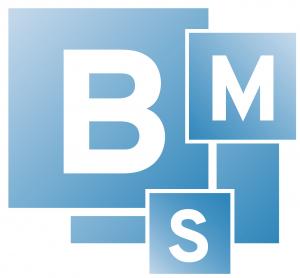Business Minding Services in Toronto Releases Report on SR&ED Tax Credit Eligibility
This comprehensive guide is designed to help Canadian businesses navigate the complexities of the Scientific Research and Experimental Development (SR&ED) program, and claim valuable tax credits with confidence.
The report breaks down the Canada Revenue Agency’s (CRA) eligibility process into clear, practical steps.
In particular, it emphasizes the difference between technical and financial reviewers. The CRA conducts separate technical and financial assessments, and appeasing both is critical to acquisition of SR&ED credits.
“Technical reviewers are primarily concerned with determining whether the project meets the definition of SR&ED,” says the report, “while the financial reviewers focus on the eligibility of associated expenditures expressed in Canadian salaries, subcontractor fees, materials, and overhead”.
These SR&ED technical definitions include things such as basic or applied research and experimental development.
On the other hand, financial reviewers scrutinize eligible costs.
Further, the report stresses the importance of contemporaneous documentation. Lab notebooks, design documents, code, records of trial runs, and time sheets are all examples of documentation CRA may require. The goal is to demonstrate advancement toward a given area of science or technology.
In particular, the report emphasizes that documentation should be made at the time, not retroactively. Retroactive documentation increases the risk of claim rejection.
The firm clarifies that claims should be submitted within 18 months of fiscal year end. When filed promptly — ideally within six months — the CRA aims to process complete claims within 60 days. Extenuating circumstances or incomplete submissions can lead to delays.
Why This Report Matters
For small and medium sized Canadian companies, the SR&ED tax credit can offset a significant portion of research and development expenses. The report demystifies eligibility thresholds, documentation standards, and interactions with CRA officials. It also alerts businesses to common “red flags” like vague expense claims and insufficient technical justification that often prompt audits.
A Business Minding spokesperson notes:
“By clearly outlining CRA’s expectations and review process, we give businesses the tools to proactively prepare strong, defensible SR&ED claims.”
With over four billion dollars in annual SR&ED incentives delivered to approximately 18,000 claimants, and with close to 75 percent of that funding going to small businesses, ensuring eligibility is both critical and strategic for growth-focused enterprises.
The full report is now available on the Business Minding Services website.
About Business Minding Services
Based in Toronto and Markham, Business Minding Services specializes in tax advisory, SR&ED application consulting, bookkeeping, CRA audit preparation, and comprehensive business support. Known for its meticulous attention to CRA compliance and proactive client communication, the firm empowers businesses to focus on innovation while maximizing tax benefits.
Nigel Vasagam
Business Minding Services
+1 416-883-2488
email us here
Legal Disclaimer:
EIN Presswire provides this news content "as is" without warranty of any kind. We do not accept any responsibility or liability for the accuracy, content, images, videos, licenses, completeness, legality, or reliability of the information contained in this article. If you have any complaints or copyright issues related to this article, kindly contact the author above.
Granola Bars Market Size, Growth, Strategic Insights, Opportunities and a 5.1% CAGR
Canada Crop Micronutrients Market Drivers Shaping Future Growth, Revenue $261.7 Million by 2027| CAGR 7.2%
Cloud Services Market to Reach $2.5 Billion, Globally, by 2032 at 16.6% CAGR: Allied Market Research
Więcej ważnych informacji
 Jedynka Newserii
Jedynka Newserii

 Jedynka Newserii
Jedynka Newserii

Polityka

Unijne mechanizmy ułatwiają zwiększenie wydatków na obronność przez europejskie kraje NATO. Ważnym aspektem infrastruktura podwójnego zastosowania
Wydatki na obronność w krajach NATO mają wzrosnąć do 2035 roku do 5 proc. PKB. W dużej mierze będzie to możliwe dzięki Unii Europejskiej, która stworzyła ramy umożliwiające krajom członkowskim realizację celów NATO w zakresie obronności, nie tylko poprzez finansowanie i inwestycje, ale także poprzez elastyczność budżetową. – To pełna synergia, można powiedzieć, że Unia Europejska współfinansuje razem z państwami członkowskimi cele zdolnościowe NATO – ocenia Paweł Zalewski, sekretarz stanu w Ministerstwie Obrony Narodowej.
Ochrona środowiska
Rusza budowa lądowej infrastruktury dla projektów Bałtyk 2 i Bałtyk 3. Prąd z tych farm wiatrowych popłynie w 2027 roku

Ruszyła budowa lądowej infrastruktury dla morskich farm wiatrowych Bałtyk 2 i Bałtyk 3 rozwijanych przez Equinor i Grupę Polenergia. To przede wszystkim baza serwisowa w Łebie i dwie stacje elektroenergetyczne. Jednocześnie trwają przygotowania do rozpoczęcia prac na morzu. Pierwszy prąd z obu projektów popłynie w 2027 roku, a w kolejce czeka morska farma wiatrowa Bałtyk 1 – największy i najbardziej zaawansowany projekt II fazy rozwoju offshore.
Edukacja
Uczelnie zaczynają wspólnie walczyć ze zjawiskiem mobbingu i dyskryminacji. Ruszają badania nad skalą problemu

Szkoły wyższe chcą aktywniej walczyć ze zjawiskiem mobbingu i dyskryminacji zarówno wobec pracowników, jak i studentów. W ramach projektu Bezpieczna Uczelnia będą się wymieniać dobrymi praktykami w zakresie polityki antymobbingowej. Zostaną przeprowadzone także badania na temat obecnej sytuacji w środowisku akademickim. Dotychczasowe badania prowadzone przez Fundację Science Watch Polska wskazują, że mobbing to dość powszechne zjawisko na uczelniach, które przybiera charakterystyczne dla środowiska formy.
Partner serwisu
Szkolenia

Akademia Newserii
Akademia Newserii to projekt, w ramach którego najlepsi polscy dziennikarze biznesowi, giełdowi oraz lifestylowi, a także szkoleniowcy z wieloletnim doświadczeniem dzielą się swoją wiedzą nt. pracy z mediami.








.gif)

 |
| |
| |
|